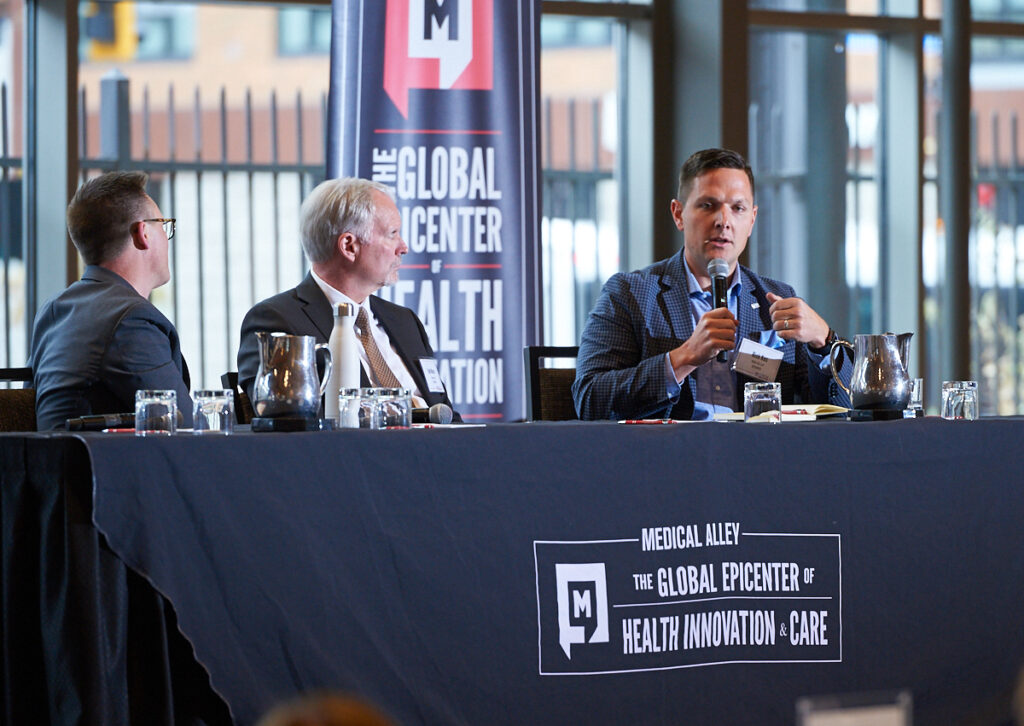How important is it to know the price of something you already know you can’t afford? What is the value of something you don’t need? Do the price-signaling mechanisms that tell you Ferraris are nice cars apply to knee replacement surgery?
November’s Leading the Conversation event started with one question – Does price transparency matter? – but prompted many more both from speakers and from the audience.

Medical Alley Association board member and Navigant managing director Joe Galatowitsch opened the event presenting the view that price transparency wasn’t enough to bend the cost curve in healthcare and that consumers still lacked the information they needed to make an educated choice about what was valuable and what was not.
Somewhat surprisingly, this view was largely echoed by Shawn Wagoner, networks lead for Bind On-Demand Health Insurance, whose company promotes price transparency as a critical element for consumers looking to be an active participant in their care planning. In Wagoner’s view, price transparency in and of itself lacks one thing: answers to the question “is the service I’m about to consume valuable, necessary, or helpful?” Without that answer, consumers have one component of the value equation, but not most critical one: certainty that they actually need what they’re paying for.
Another question that emerged from multiple panels was which actor in the healthcare market actually has the ability to institute price transparency. Patients, providers, and payers all have critical pieces of information, but too little to unilaterally force the change, and the incentives for action are unclear. As Gravie’s COO Marek Ciolko put it, “Google and Amazon made their investments in seamless shopping because they knew it would make them money. Does up-front pricing offer the same upside for a hospital?”

The status quo was off the table for most of the day as no one backed the current system to continue much longer. Amplifon SVP Tabatha Erck explained the level of knowledge currently required for consumers to understand whether they have satisfactory coverage was unsustainable and the lines being drawn around what was and was not covered in the hearing space were often as puzzling to professionals in the field as they were to consumers.
Emerging Therapy Solutions’ VP of operations Ashley Hume noted the likely need for political intervention to create the activation energy necessary for change, though Wagoner believed that customer dissatisfaction – a sentiment growing in volume – would spark the necessary innovation: “Circular blame where no one gets an answer, but consumers want one, is an entrepreneur’s opportunity,” he said.
One of the points of agreement was that — with or without external intervention — substantial collaboration was going to be necessary for price transparency to become reality, validating the importance of gatherings like Leading the Conversation and underscoring the unique abilities of the Medical Alley community.

So, after all that, does price transparency matter? Prevailing opinion among attendees and participants seemed to there is clear upside to a transparent system, but consumers need more than that to be empowered the way they need to be. Price transparency may well be a critical piece of healthcare’s future, but it won’t be on its own, it will be as a precondition to larger systemic shifts.
As always, we are grateful to our sponsors — Navigant, Associated Benefit and Risk Consulting, RSM, and Ximedica — for their support of Leading the Conversation, to our speakers for sharing their expertise, and to everyone who attended. The future of healthcare is driven by what happens here in Medical Alley and discussions like these are a critical element of charting a path forward in healthcare.
